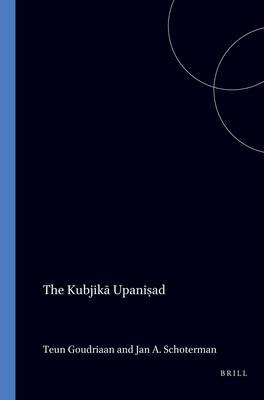
- Afhalen na 1 uur in een winkel met voorraad
- Gratis thuislevering in België vanaf € 30
- Ruim aanbod met 7 miljoen producten
- Afhalen na 1 uur in een winkel met voorraad
- Gratis thuislevering in België vanaf € 30
- Ruim aanbod met 7 miljoen producten
Zoeken
Omschrijving
The two main constituents of the Hindu ritual-speculative tradition, the Vedic and the Tantric, are often considered to be more or less antagonistic. The actual situation is less simple: there are resemblances, intersections and combinations, which tend to fuse both elements into a continuous tradition. The Kubjikā Upaniṣad is a unique document which illustrates this continuity.
The text consists of twenty-five chapters, which have never before been edited or translated. It belongs to the corpus of the younger, so-called 'sectarian' Upaniṣads. The critical edition was prepared by Schoterman from three manuscripts. After his untimely death, Goudriaan finalized the edition and added the translation, an introduction, and an appendix in which four more (fragmentary) manuscripts are evaluated. The text is basically Tantric; it reveals mantras and mandṇḍalas of the goddess Kubjikā and other members of her pantheon, supplemented by a digression on the morning-worship of the Goddess. The Vedic element consists of more than 100 Atharvavedic stanzas, sometimes of high literary quality, integrated into the Kubjikan ritual system. In addition, there are descriptions of magical rites in a true Atharvanic vein. All this results in a not perfectly harmonized, yet undoubtedly intriguing and partly still mysterious, text, which shows the development and practice of Goddess worship in South Asia from an unexpected point of view.
The text consists of twenty-five chapters, which have never before been edited or translated. It belongs to the corpus of the younger, so-called 'sectarian' Upaniṣads. The critical edition was prepared by Schoterman from three manuscripts. After his untimely death, Goudriaan finalized the edition and added the translation, an introduction, and an appendix in which four more (fragmentary) manuscripts are evaluated. The text is basically Tantric; it reveals mantras and mandṇḍalas of the goddess Kubjikā and other members of her pantheon, supplemented by a digression on the morning-worship of the Goddess. The Vedic element consists of more than 100 Atharvavedic stanzas, sometimes of high literary quality, integrated into the Kubjikan ritual system. In addition, there are descriptions of magical rites in a true Atharvanic vein. All this results in a not perfectly harmonized, yet undoubtedly intriguing and partly still mysterious, text, which shows the development and practice of Goddess worship in South Asia from an unexpected point of view.
Specificaties
Betrokkenen
- Uitgeverij:
Inhoud
- Aantal bladzijden:
- 180
- Taal:
- Engels
- Reeks:
- Reeksnummer:
- nr. 10
Eigenschappen
- Productcode (EAN):
- 9789069800677
- Verschijningsdatum:
- 1/01/1994
- Uitvoering:
- Paperback
- Formaat:
- Trade paperback (VS)
- Afmetingen:
- 165 mm x 239 mm
- Gewicht:
- 430 g

Alleen bij Standaard Boekhandel
+ 174 punten op je klantenkaart van Standaard Boekhandel
Beoordelingen
We publiceren alleen reviews die voldoen aan de voorwaarden voor reviews. Bekijk onze voorwaarden voor reviews.







